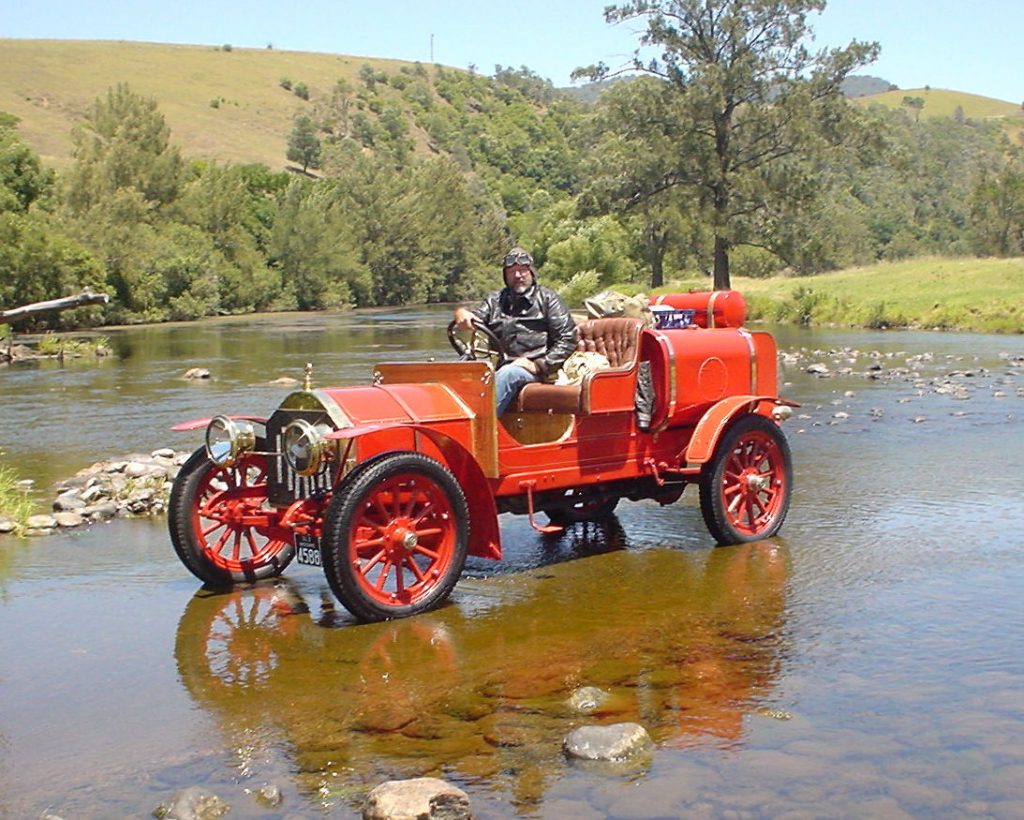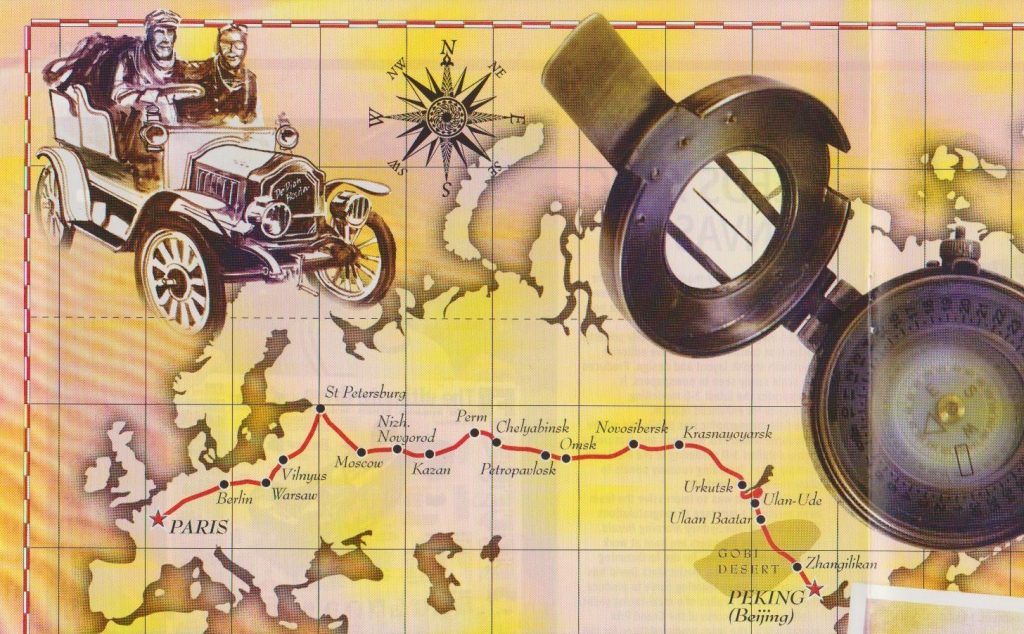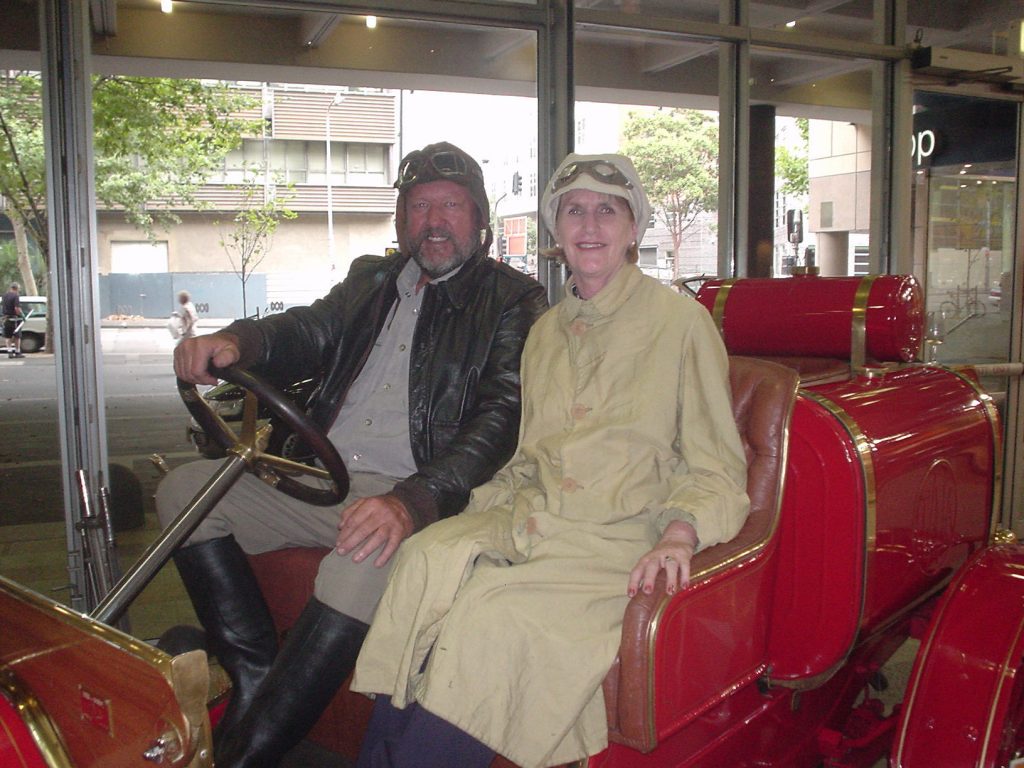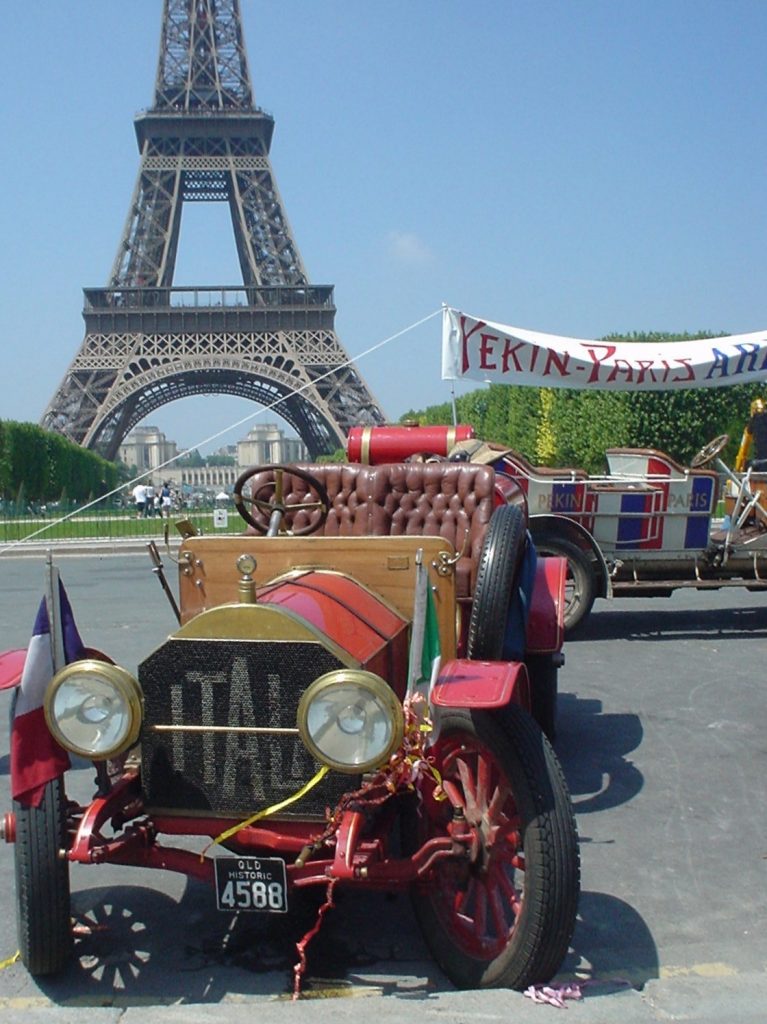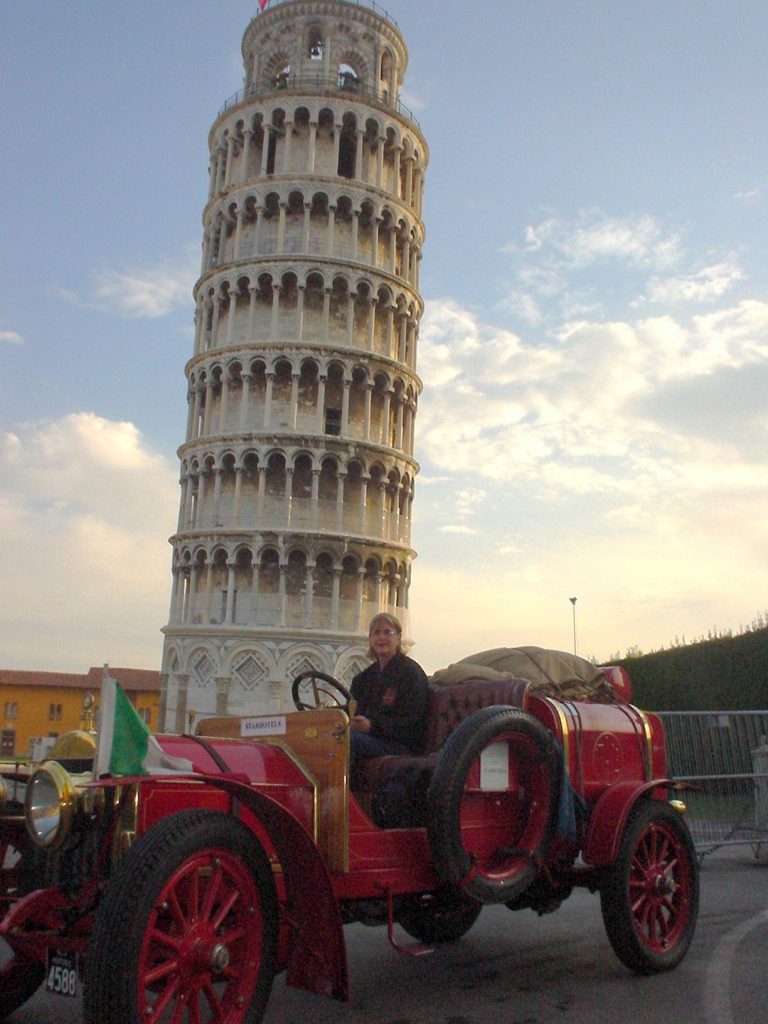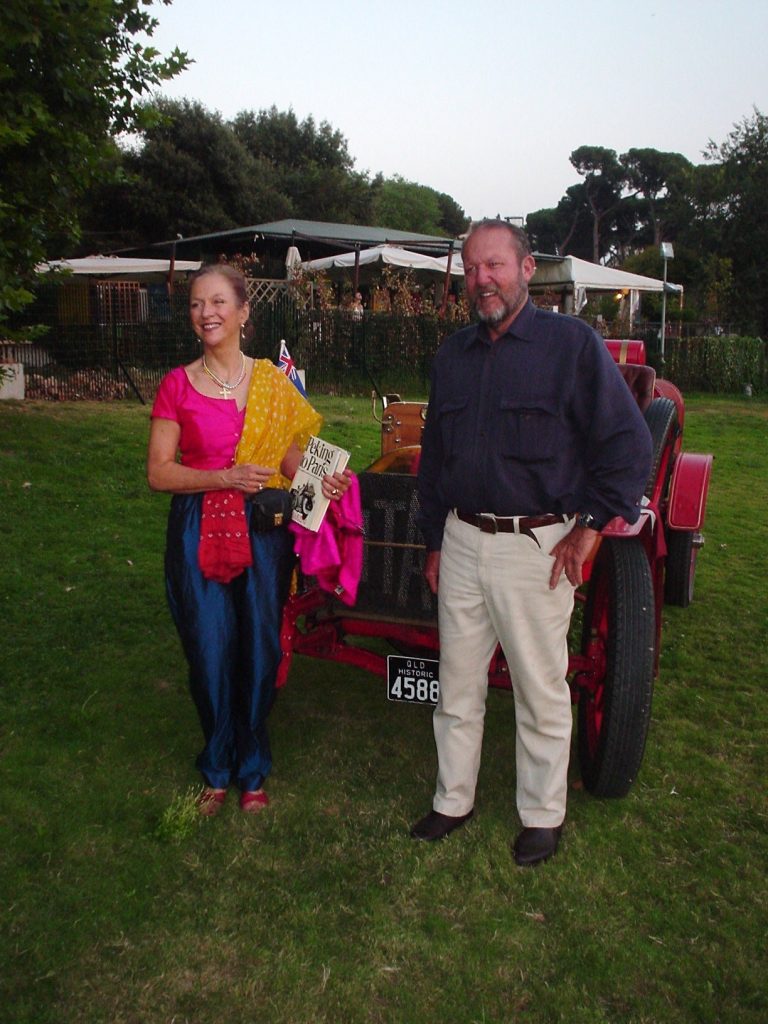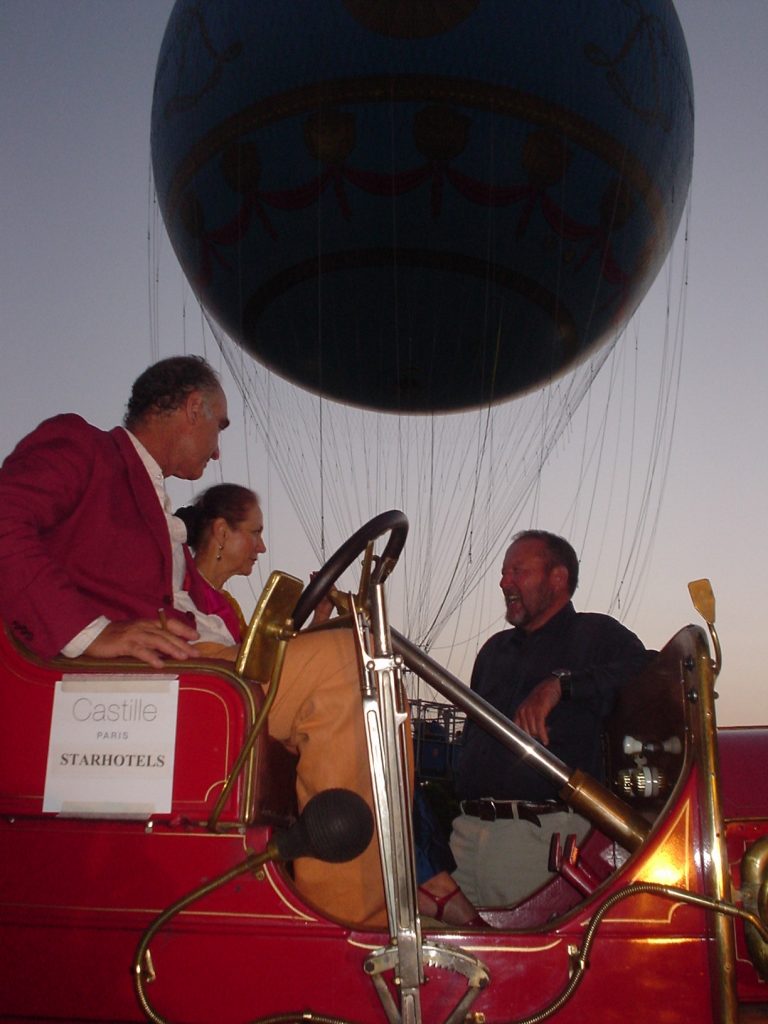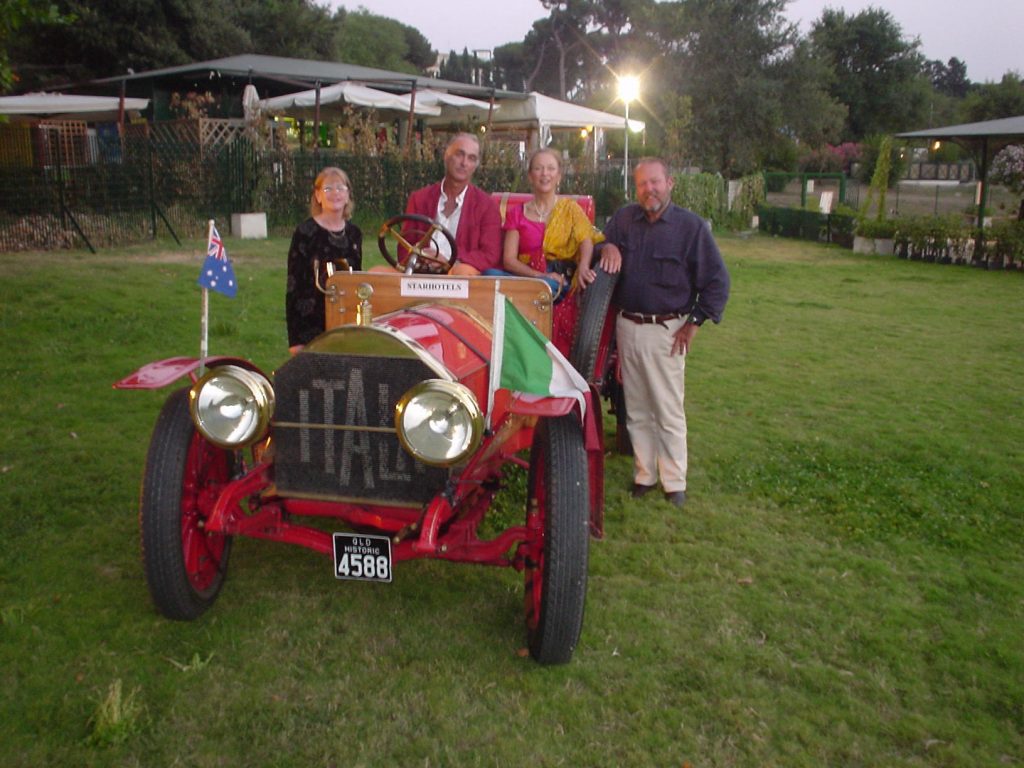The greatest motoring achievement of all time…
In March 1907, the Parisian newspaper Le Martin offered the world a challenge – “Will anyone agree to go this summer from Peking to Paris by motor car?”
Prior to this event, the car was still considered a novelty, an expensive toy for the wealthy elite – hardly a dependable form of transport.
The 16,000km challenge was ultimately taken up by drivers of four different makes of automobile. – two French DeDion Boutons, a Dutch Spyker, an Itala from Turin and a French three-wheeled Contal cycle-car.
As for the race, there were to be no rules, no maps and for that matter, no roads for much of the route.
And the prize? A magnum of Mumm champagne at the finish line.
On June 10, the expedition departed Peking headed for the Great Wall of China, where drivers soon faced the treacherous Kalgan mountain passes requiring the cars to be man-handled and hauled by mules. But it was the harsh conditions of the Gobi Desert in Mongolia which claimed the first victim – the Contal cycle-car – its two drivers, almost dead from thirst, were miraculously found by a passing caravan of Mongolian cameleers.
As the journey continued, the cars were continually stripped of the excess weight until there was only a bare minimum of an original vehicle left. Bogged in the desert sands and in rice paddies, every day was a constant battle of running repairs to keep the four cars going.
By this stage, Prince Borghese in the Itala had developed an impressive lead over the remainder of the field, but all teams suffered the same problems.
Rain in Siberia had turned the roads and countryside into a vast morass, the cars routinely bogged in black mud.
Drivers soon realised the only way to continue was to resort to following the Trans-Siberian railway line around the edge of Lake Baikal.
Borghese’s car was very nearly destroyed when it fell backwards through a rotting timber bridge into a ravine and was only rescued when railway workers built a derrick to pull the car out.
But so confident was Prince Borghese of winning, he made a detour of 1500kms from Moscow to St Petersburg to attend to attend a grand dinner in his honour, where, according to reports, it was attended by “many fine ladies”
The next morning, the Prince drove back to the detour point and rejoined the event route, ultimately crossing the finish line in Paris as the winner, sixty-one days after the race began.
The De Dions and the Spyker arrived in Paris 21 days later.
The Great 2005 Peking to Paris Expedition
The gauntlet is thrown, the crank-handle is turned, the goggles are on.
In a daring recreation of a milestone in motoring history, adventurer Lang Kidby and newspaper cartoonist Warren Brown will retrace the exact route of the original Peking to Paris Trail for the first time I almost 100years.
The Great 2005 Peking to Paris Expedition is a historical recreation never attempted before. For the best part of a century, the route travelled by the original participants has been closed to the world but is now accessible.
But not only the expedition’s course will be historically accurate, it will be done in cars of original make and manufactured between 1905 and 1910. The Contal being the only exception and a replica will be built.
Peking to Paris Book
Lang Kidby
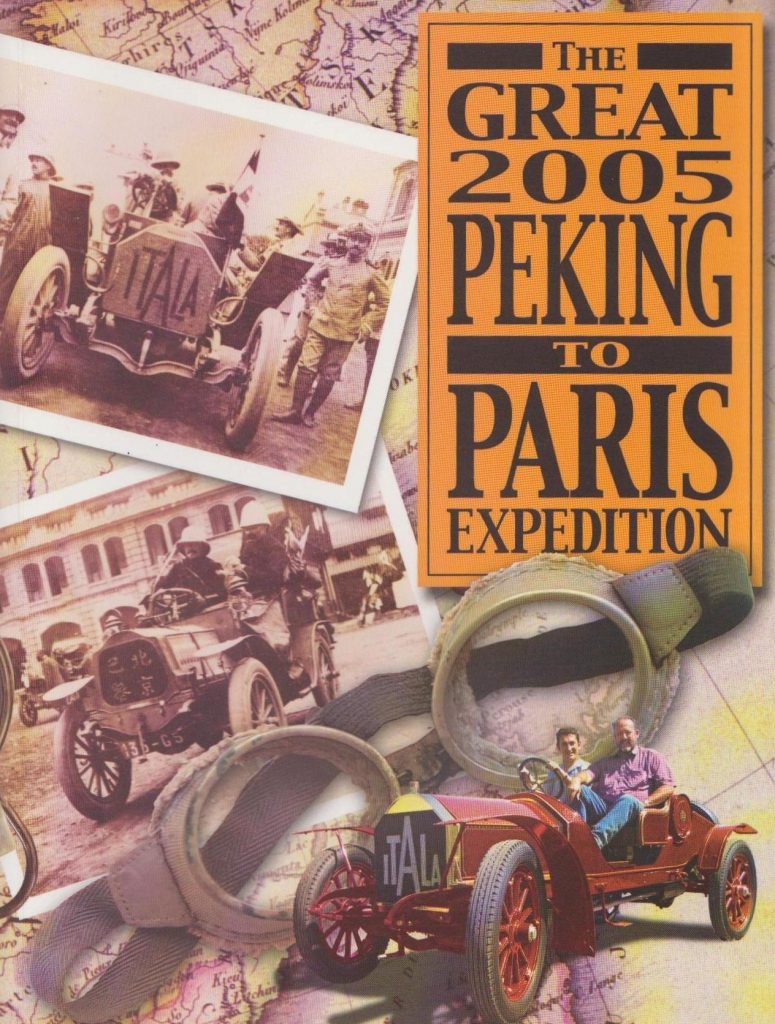
The concept of a 14,000 kilometre drive across the world in 100-year-old cars seemed a far-fetched idea in mid-2004 but, within a year, five vehicles of the same type which undertook the 1907 Raid had arrived safely in Paris.
The details of the beginnings and en route adventures are well documented in the book “The Great Peking to Paris Expedition” published by Harper Collins The Expedition was not a tour but a drive by five individual teams on a historical re-creation.
I first read Luigi Barzini’s fabulous book, Peking to Paris, at the age of 14. Although typical of the somewhat stilted and formal style of the Victorian era, I suspected nobody with an ounce of adventure in their body could fail to be excited by the description of true heroes dashing across strange and dangerous lands. Oh, how I wished I was born a hundred years before (and still do!)
Occasionally during the following decades I would see an article on the great 1907 raid and my interest would be revived. It was always in my mind to travel in the footsteps of Borghese, Cormier, Goddard and the others. London, Paris or Monte Carlo held no attraction, but to me the names Timbuktu, Mecca, Congo and Gobi were like the Sirens’ voices drawing Ulysses inexorably towards them. I managed to satisfy my curiosity with many of those Sirens (without meeting the ancient sailors’ fate) but the great raid seemed to elude me.
At first I just wanted to see what they saw and go where they went but, never in a modern air-conditioned vehicle. In the early 1980’s Mick Reynolds, my business partner, and I had just sold our very successful marine construction company and were casting around for a new direction. Peking to Paris came to the surface. As a long time military vehicle collector, I thought this would be a great trip in a 40 year old Army Jeep. Plans were in place, a lovely original jeep was prepared then fate stepped in.
Mick was approached by the Army to return to service as a badly needed senior flying instructor at the same time I was approached to manage a company involved in scouring the backwaters of the world for abandoned World War Two aircraft. A short comparison between a two-month adventure and supporting our young families with long term, highly paid, adventurous jobs placed Peking to Paris on the back burner.
Peking to Paris still would not go away. Despite numerous adventures on jungle and desert expeditions, flying vintage aircraft across the world and sailing to exotic tropical locations it was still always on the to-do list, no matter how faintly at times.
Ten years later, I had progressed from individual adventures to organizing serious expeditions for like-minded people. The longest vintage aircraft rally of all times – 25 pre-1950 aircraft from England to Australia, several jungle expeditions in New Guinea and a crossing through the exact centre of Australia’s 7 deserts for a convoy of adventurers were all part of what had now become a somewhat sporadic business.
During the England to Australia Vintage Aircraft Rally there had been a US Army helicopter pilot, Boyce Bingham, who impressed me with his can-do attitude. Being a career soldier he had been somewhat stifled in his personal travel aspirations. Knowing “Bing” was due for long service leave I gave him a call and suggested we organise a Peking to Paris recreation for a group of keen motorists – in modern four wheel drives. He leaped at the opportunity. Within four months we had 20 entrants. Bing had been on a survey trip to China and I had been to Europe. With Chinese approvals and the OK from the Russians to travel through Siberia we were set to be the first to follow the original 1907 route in 80 years. Suddenly the USSR collapsed, turning the country into administrative turmoil. All bets were off and Peking to Paris disappeared into the mist once more!
Once again, I continued to organize various historical international adventures and had a lot of fun in the process. Peking to Paris only occasionally crossed my mind in the ever growing and, impossible to satisfy, “I must do that one day” list. At last count the list will be completed when I reach 178 years of age.
I was starting to feel a little like Tantalus, chained up to his neck in water but dying of thirst because he could not move his head, each time I thought of dashing across the Gobi desert in Borghese’s footsteps.
The Gods must have taken pity for they gave me another chance.
In 2004 my ever-suffering wife, Bev, and I drove a 60 year old Dodge Army Staff Car from Aqaba in Jordan through, Syria, Turkey and across Europe to attend the 60th Anniversary of the World War Two D-Day landings. We were relaxing in our camp in a small village on the Normandy coast when a young fellow wandered up and in an Australian accent said “G’day I’m Warren Brown”.
Warren, also a military vehicle enthusiast, had come for the D-Day celebrations as well. We hit it off pretty well from the start and it was not long before we asked him to join us in our comfortable staff car instead of bouncing around in the back of an English World War Two army truck with his tour group.
Around the camp-fire (actually in the bar with the serious drinking French Air Force lads) we regaled each other with our ever more exciting tales of past adventures. In the true Aussie tradition of, never let a good story be ruined by facts, even the Frenchmen who could not speak English hung on our every word. Warren’s atrocious Peter Sellers Inspector Cluseau French accent got stronger as the evenings wore on endearing him to the locals. They could not understand a word he said but he sounded like a Frenchman.
During a period of more introspective conversation we were talking about various driving adventures and I mentioned Peking to Paris as something I wanted to do. Warren immediately told me he had entered a large modern vehicle rally organised for 2007 (the hundredth anniversary of the original event). Now, going in somebody else’s event with a great crowd of “tourists” is not my style.
I thought that Warren’s great enthusiasm was too good to waste on a tour and he could be a fine ally to resurrect my own Peking to Paris aspirations. He obviously had a great interest in the event and had done quite a bit of research on the race of 1907.
The progress in the next 24 hours proceeded along these lines:-
“You don’t want to be on a tourist drive with 100 other people, you should do it yourself.”
“Oh, yes what do you have in mind?”
“I think we should build a replica ITALA and do it alone.”
“What do you mean ,WE?”
“You and me.”
Warren’s great enthusiasm came to the fore and within hours, plans were being laid and ideas coming thick and fast. I called Gregory Alegi, an old friend of mine and president of the Italian Vintage Aircraft Association. Within hours Gregory had contacted his counterpart in the Italian Veteran Car Association. I soon had access to the original 1907 ITALA in the Turin National Motor Museum and a huge resource list for photos, plans and construction details.
By the time we parted a few days later, the Peking to Paris expedition was under way. It was just Warren and me in our replica 1907 ITALA and Bev going on ahead, in her usual manner, organising clearances, hotels and dealing with bureaucracy.
A couple of days after we parted Warren sent me an e-mail saying a miracle had occurred and he knew of a REAL 1907 ITALA in Sydney that we could copy. I couldn’t stand the thought of a replica when there was a real car still alive in the world so, within a couple of days, Warren had bargained the owner down from his original price to something we could marginally afford. I passed through Sydney on my way to a job in USA and within a half hour of seeing it we stood beside our new ITALA.
What an adventure awaited us, as we followed Prince Borghese’s footsteps across the world in the same type of car. It put all my other Peking to Paris aspirations in the shade. But this was only the beginning!
A few days later I received another e-mail from Warren saying the owner of a 1907 de Dion-Bouton, two of which were in the 1907 race, demanded to come with us. I thought this was a great idea but the request caused Warren to have a vision. What if we could get all 5 original cars? We could then really feel what it was like in 1907.
Things had looked so simple a few days before. Now we had to find not only some of the rarest cars in the world but drivers willing to flog them on some of the roughest roads in Asia and pay the considerable costs of such an adventure. I had no doubt I could organise and run the event and Warren’s keenness buoyed my hopes of finding the necessary but elusive sponsorship but we had made ourselves a pile of work.
We started searching for cars and participants. Several very expensive vehicles became available in Europe but our participating prospects baulked at the cost. One day there was a call that Keith Brodie who worked at Newscorp with Warren wanted to come. He had a long history of motor racing and asked if we could find him a car. We had firmly decided only the original types would be allowed to participate and had rejected requests from owners of beautiful cars of other makes.
I started the first of several hundred enquiries but eventually tracked down a de Dion of suitable model and style in Adelaide, South Australia. Keith was delighted and bought the car (requiring extensive restoration) immediately. Now we had three!
Another contact arrived in the shape of John Matheson, a Sydney surgeon, who had driven a 1960’s Rolls Royce in a Peking to Paris commemorative rally (far from the original route) in 1997. John was very keen to travel the original route in an original car. He was highly disappointed when told the two de Dion and ITALA slots were taken.
This left only two cars to find. The fabulous Dutch Spyker is one of the rarest cars in the world, with a price tag to match. We were despairing of finding not only a Spyker but an owner willing to drive it 16,00 kilometres across deserts and mountains.
The final vehicle was a little French three-wheel cycle car called a Contal. We were sure it would be totally impossible to find one after extensive enquiries around the world. It seemed none existed any longer.
John is a quietly determined fellow and having thought of his options said “What if I build a replica Contal?” It was a prospect I found daunting. I had suggested a replica ITALA initially but there was the original car in the Turin Motor Museum in Italy to copy and a vast number of photos, plans and specifications available.
Warren and I thought this would be an incredible undertaking and encouraged John to look at the prospect. Within a few weeks John and his son Michael were hard at work on a Contal having procured plans and photographs from around the world.
What a great event we had, four of the five original types, an ITALA, two de Dion-Boutons and a Contal.
One night I got an excited phone call from Warren.
“We’ve got it!”
“Got what?”
“The Spyker!”
Stijnus Schotte, a Dutchman owning the last regularly operating 1907 Spyker in the world wanted to come.
We had really achieved what neither of us believed was much more than wishful thinking. We would have been more than satisfied with three original cars but, now we had all 5. By this time, dozens of veteran car experts around the world had told us it was a ridiculous dream to think we could assemble the full 1907 field. Well we had done it!
Suddenly, a potential disaster struck. The owner of the first de Dion called to say he was pulling out. It was now almost too late to start looking for another 1907 de Dion owner to come. What a blow to our enthusiasm.
Unrealised by us, the spirit of what were trying to do was shared by others. When he heard the sad news, Keith Brodie, refused to accept the situation. He demanded to know what the owner wanted for his de Dion and for no other reason than to keep the purity of the event, purchased the vehicle – at huge cost. Keith now had two de Dions!
Where, at this late hour, were we to find someone willing to buy and drive Keith’s second de Dion? We did not have to look far, he was already on the team. Within a few days John Matheson had handed the Contal project over to his son Michael to complete and enter in his own right. John enthusiastically took up the challenge to buy Keith’s first partly restored de Dion while Keith stepped into the original entrant’s car he now owned.
We all felt very good about the situation. Denied the chance to compete in an original car John Matheson had taken up the challenge to build the Contal replica to complete the field in what, to everybody involved, was as faithful a tribute to the original pioneers as we could muster.
His capable son, Michael, was continuing the Contal construction and would drive it himself. John now had his original dream fulfilled of driving from Peking to Paris in a genuine turn of the century vehicle.
Now the real work began. It was a huge undertaking by any standard to organise a journey by 5 one hundred year old cars with their support crews and an 8 person film crew 16,000 kliometres across what is still some of the remotest country on earth.
We had chosen three of the most difficult countries in the world to import and drive vehicles. China recognises no international agreement regarding motor vehicles. Old cars are prohibited imports, temporary entry for even a few days requires a deposit (in cash) of 110% of the value of the car and no foreigner may drive in the country on an International or National Driver’s Licence. Of course foreign number plates are not recognised and temporary Chinese plates must be obtained by the most circuitous route imaginable.
Our initial approach recommended by the Chinese Consulate in Sydney was to the Federation of Automobile Sports. All we wanted was to drive directly from Beijing to Erinhot on the Mongolian border, a distance of 600 kilometres – say 3 days in all. I nearly fell off my chair at the first meeting with FASC in Beijing when the Deputy Secretary General laid a proposed bill of $US60,000 for those 3 days driving on the table.
His list of permits from every possible department, local government, police and of course his own organisation went on and on. Amazingly almost every item on the list was exactly $US6,000. When I explained that we did not want to rent the whole of China for three days, just travel along one road, he generously, with the stroke of a pen, reduced the FASC amount from $24,000 to $10,000.
Discussions went on for some time before the Deputy Director awoke to the fact we were not a bottomless pit of money (he had just finished dealing with the Formula One Grand Prix in Shanghai) and there was no milk, let alone cream, to be had out of the deal.
The whole show nearly stopped there as we had no major sponsor at that stage and the entrants were certainly not prepared to put in an extra $10,000 each just to drive 600km of a 16,000km journey. The Deputy Director then informed us that as we were not a large competitive motor event requiring police escorts, road closures and huge public gatherings we could do what we originally wanted as private tourists.
This could be done through a travel agent “And I just happen to know the very one who can help you”.
This initial 10 day trip to China was a constant stream of meetings focused partly upon sponsorship opportunities but mainly upon the vexed question of obtaining drivers’ licences and car number plates. Patrick Chou a board Director of AUDI cars came to our rescue and undertook to provide us with the required number plates.
Licence discussion went on…..
My task was also to reach the Mongolian border on a survey trip to discover areas of interest for the film crews as well as establishing the condition of the roads along the way. Not having a Chinese driver’s licence I was generously offered a four wheel drive vehicle with a driver by Jason Li of the Chinese Automobile Association who eventually extended their support to a larger sponsorship.

